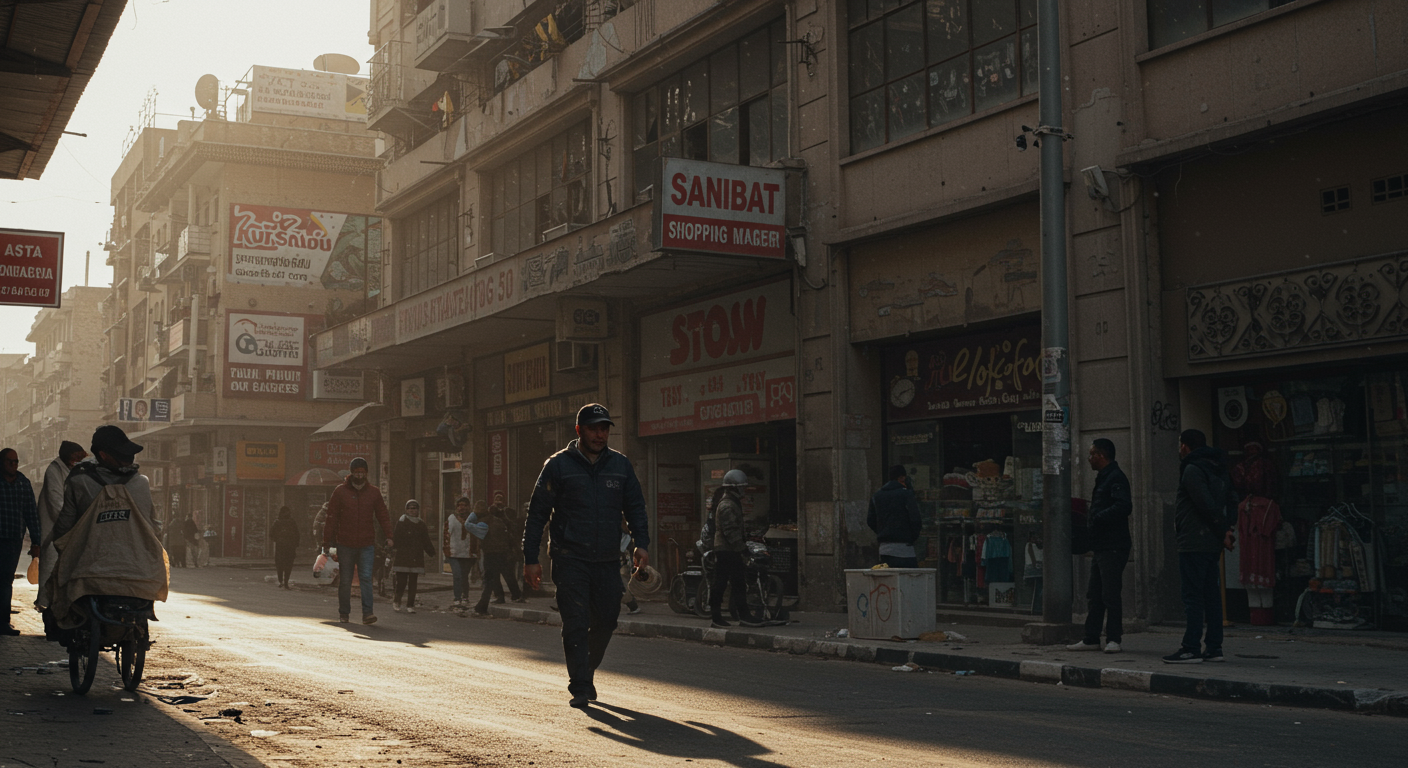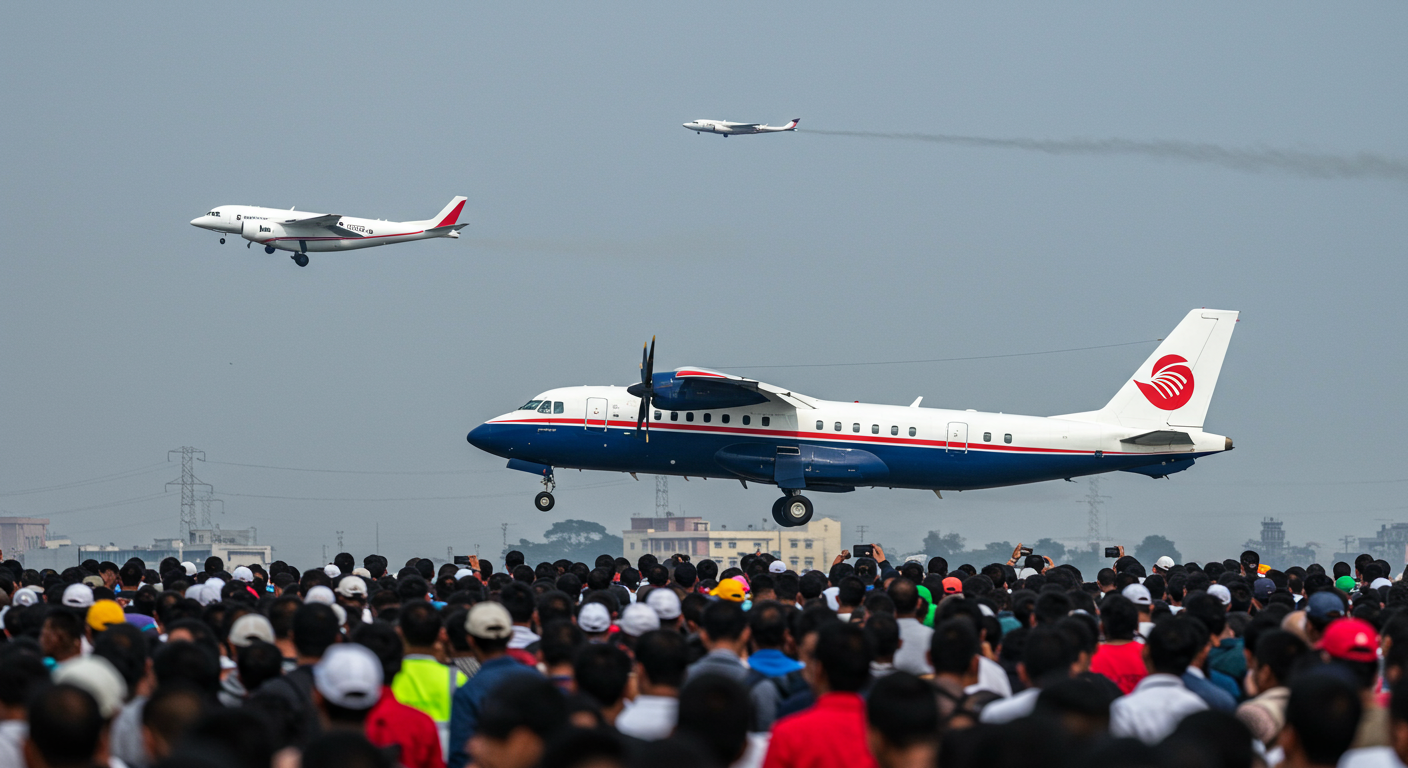It’s a chilling thought, isn’t it? One moment, a place is bustling with life, filled with the everyday sounds of commerce and conversation. The next, it’s a scene of unimaginable devastation, a nightmare unfolding right before our eyes. This is the tragic reality that recently struck Baghdad, Iraq, when a massive fire tore through a shopping mall, leaving behind a profound trail of sorrow and destruction.
When news breaks of such an event, especially one where so many lives are tragically lost, it sends ripples of shock and grief across the globe. It reminds us of how fragile life can be and how quickly normalcy can turn into a desperate struggle for survival. This particular incident, with its heartbreaking toll, is a stark reminder of the critical importance of safety, preparedness, and the value we place on every single human life.
A Day Engulfed in Flames: What Happened in Baghdad
The horrifying incident unfolded in Baghdad’s al-Nahda district, an area well-known for its numerous shops specializing in auto spare parts. Imagine a labyrinth of businesses, tightly packed together, each perhaps holding various materials that, under the wrong circumstances, could fuel a disaster. On this fateful day, that unfortunate potential became a terrifying reality as a huge fire erupted, quickly escalating beyond control.
The initial reports painted a grim picture, detailing an inferno so massive that it claimed the lives of at least 50 people, with many more suffering injuries. Such numbers are not just statistics; they represent individuals with families, dreams, and futures that were suddenly and tragically cut short. The sheer scale of the casualty count underscores the ferocity and rapid spread of the fire, leaving little time for those caught within its grasp to escape.
While the immediate cause of the fire wasn’t clear, the impact was immediate and devastating. The very heart of a commercial hub, a place of daily transactions and livelihoods, was transformed into a chaotic scene of smoke, flames, and desperate rescue efforts. The incident serves as a painful reminder of the constant vigilance required, especially in commercial zones where a mix of goods, people, and potentially outdated infrastructure can create a perfect storm for catastrophe.
The Scene of Devastation: A City’s Struggle
Once the flames began to spread, the al-Nahda district became a chaotic battleground. Thick plumes of black smoke billowed into the sky, visible from miles away, signaling the immense tragedy unfolding below. The air would have been heavy with the acrid smell of burning materials, and the sounds of crackling flames would have been drowned out only by the cries of distress and the urgent sirens of emergency vehicles.
Civil Defense forces, the brave men and women who rush into danger when others flee, were immediately on the scene, battling the raging inferno. Their task was incredibly challenging, navigating through collapsing structures and intense heat, all while desperately searching for survivors amidst the wreckage. Ambulances, sirens wailing, raced to and from the site, transporting the injured to hospitals, their crews working tirelessly against time to save lives.
Imagine the scene: firefighters aiming powerful hoses at the heart of the blaze, their faces streaked with sweat and soot, pushing through smoke that stung their eyes and lungs. Meanwhile, paramedics attended to the wounded, offering comfort and urgent medical care. The entire area would have been cordoned off, but the sheer scale of the disaster meant that onlookers and concerned citizens would have gathered, watching in horror, hoping for news of loved ones, or simply trying to comprehend the sheer magnitude of the destruction. It was a scene of true devastation, a testament to the destructive power of uncontrolled fire.
Understanding the Risks: Why Such Tragedies Occur
While the specific cause of the Baghdad mall fire wasn’t immediately identified, such catastrophic events, unfortunately, are not uncommon in many parts of the world, including Iraq. They often shine a harsh light on underlying issues related to safety standards and infrastructure. Commercial areas, especially those in older parts of cities or those that have grown organically over time, can present unique challenges.
Consider a market district like al-Nahda, crammed with shops selling auto spare parts. These businesses often store a variety of materials that are inherently flammable – oils, lubricants, rubber, plastics, and even chemicals. If these materials are not stored correctly, or if electrical wiring is old, faulty, or overloaded, the risk of a spark turning into an uncontrollable blaze becomes incredibly high. Add to this the potential for narrow alleys, limited access for emergency vehicles, and a lack of proper fire suppression systems or clear evacuation routes, and you have a recipe for disaster.
In many places, economic pressures can sometimes lead to shortcuts in safety measures. Buildings might be constructed without adhering to the strictest fire codes, or existing codes might not be rigorously enforced. This isn’t about pointing fingers, but rather understanding that such tragedies often stem from a complex interplay of factors, including regulatory oversight, economic realities, and public awareness of risks. The Baghdad fire serves as a sobering global reminder that investing in robust safety infrastructure and rigorous enforcement is not just a regulatory burden, but a vital investment in human lives.
The Human Toll: Beyond the Numbers
Behind every headline, every statistic of lives lost or injured, there are stories. There are individuals who went to work that day, perhaps looking forward to returning home to their families, only for their lives to be tragically cut short. There are families who received news that shattered their world, embarking on the heartbreaking journey of identifying loved ones or waiting anxiously for news from hospitals.
The emotional ripple effect of such a disaster extends far beyond those directly affected. The entire community, the city of Baghdad, will feel the impact of this loss. Businesses are destroyed, livelihoods are lost, and a collective sense of grief and vulnerability settles in. Survivors will carry not just physical scars but also deep emotional wounds, grappling with the trauma of what they witnessed and endured. Rescuers, too, witness unspeakable horror, and their own well-being must be considered in the aftermath.
In the face of such immense sorrow, humanity often shows its incredible resilience. Communities come together, offering support, comfort, and aid to those who have lost everything. While the pain is profound and immediate, there is often a quiet strength that emerges, a determination to rebuild and to support one another through the darkest of times. But first, there is the overwhelming process of mourning and healing, a journey that takes time, empathy, and collective effort.
A Call for Vigilance and Safer Futures
The tragic fire in Baghdad’s al-Nahda district is more than just a news story; it’s a solemn lesson etched in sorrow. It highlights the urgent need for a universal commitment to stringent safety standards in all public and commercial spaces. From meticulous electrical inspections to proper storage of flammable materials, from clear and accessible emergency exits to state-of-the-art fire suppression systems, every detail matters when it comes to safeguarding lives.
This incident compels us to reflect on our own environments and ask crucial questions: Are our schools, workplaces, and shopping centers truly safe? Are the regulations in place adequate, and more importantly, are they consistently enforced? The answer to these questions determines whether we can prevent future tragedies or are doomed to witness similar heart-wrenching events unfold elsewhere.
Our thoughts and deepest sympathies go out to all the victims, their families, and the people of Baghdad. In times of such profound loss, the world stands in solidarity, hoping for healing and advocating for a future where such devastation can be prevented. May this tragic event serve as a powerful catalyst for change, inspiring communities and governments worldwide to prioritize safety above all else, ensuring that our public spaces are truly safe havens, not potential sites of sorrow.









